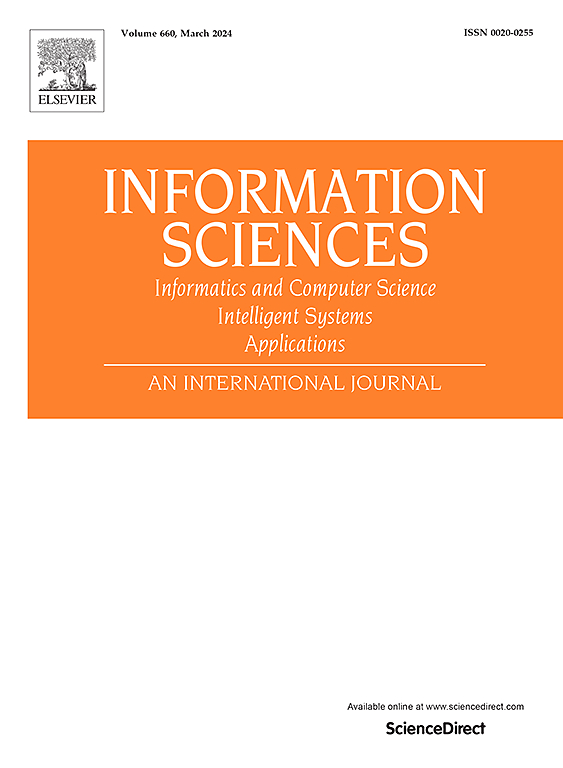基于模糊相似性和扩散增强的上下文亲和力的数据流聚类
IF 6.8
1区 计算机科学
0 COMPUTER SCIENCE, INFORMATION SYSTEMS
引用次数: 0
摘要
数据流聚类为识别潜在无界数据对象序列中的底层模式提供了一种有效的方法。现有的数据流聚类方法主要面临两个关键问题:(1)对固定大小的地标窗口内数据对象之间的关系评价不足,导致聚类质量下降;(2)缺乏将有用的知识从以前的窗口转移到当前窗口的有效机制,削弱了模型对数据流演变的适应性。为了解决这些问题,首先提出了一种基于公理模糊集理论的数据流聚类方法。首先,该方法利用公理模糊集理论度量窗口内数据对象之间的关系,捕获相似度信息,更准确地揭示底层数据分布;其次,有效的扩散过程通过上下文传播增强两两亲和力,显著提高集群内部的连通性。最后,将学习到的亲和矩阵应用到谱聚类中进行数据流聚类。随着时间的推移,我们根据数据对象和集群中心之间的距离更新动态集。该动态集保留有代表性的数据对象,并有效地将以前学习过的知识转移到当前的地标窗口。在4个数据集和7种算法上的实验结果表明了该方法的有效性和鲁棒性。本文章由计算机程序翻译,如有差异,请以英文原文为准。
Data stream clustering via fuzzy similarity and diffusion-enhanced contextual affinity
Data stream clustering provides an effective method for recognizing underlying patterns in potentially unbounded sequences of data objects. Existing data stream clustering methods primarily encounter two key issues: (1) the inadequate evaluation of relationships between data objects within fixed-size landmark windows, leading to degraded clustering quality; and (2) the absence of efficient mechanisms for transferring useful knowledge from previous windows to the current window, weakening the model’s adaptability to data stream evolution. To address these issues, a data stream clustering method based on axiomatic fuzzy set theory via a diffusion process is first proposed. First, the proposed method employs axiomatic fuzzy set theory to measure the relationships between data objects within the window, capturing similarity information to more accurately reveal the underlying data distribution. Second, an efficient diffusion process enhances pairwise affinities through contextual propagation, which significantly improves connectivity within clusters. Finally, the learned affinity matrix is applied to spectral clustering for data stream clustering. Over time, we update the dynamic set according to the distance between data objects and cluster centers. This dynamic set retains representative data objects and effectively transfers previously learned knowledge to the current landmark window. Experimental results on four datasets and seven algorithms demonstrate the effectiveness and robustness of the proposed method.
求助全文
通过发布文献求助,成功后即可免费获取论文全文。
去求助
来源期刊

Information Sciences
工程技术-计算机:信息系统
CiteScore
14.00
自引率
17.30%
发文量
1322
审稿时长
10.4 months
期刊介绍:
Informatics and Computer Science Intelligent Systems Applications is an esteemed international journal that focuses on publishing original and creative research findings in the field of information sciences. We also feature a limited number of timely tutorial and surveying contributions.
Our journal aims to cater to a diverse audience, including researchers, developers, managers, strategic planners, graduate students, and anyone interested in staying up-to-date with cutting-edge research in information science, knowledge engineering, and intelligent systems. While readers are expected to share a common interest in information science, they come from varying backgrounds such as engineering, mathematics, statistics, physics, computer science, cell biology, molecular biology, management science, cognitive science, neurobiology, behavioral sciences, and biochemistry.
 求助内容:
求助内容: 应助结果提醒方式:
应助结果提醒方式:


